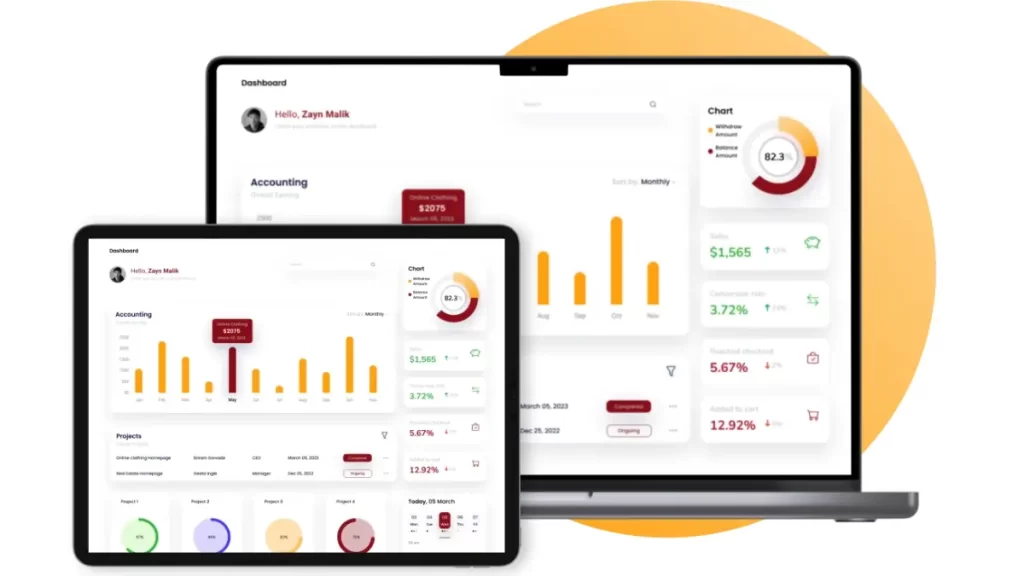One might not understand the importance of condition monitoring until the worst happens. Imagine the impact of a machine breaking down right in the middle of a critical production run. The costs, the delays—it’s a manufacturer’s worst nightmare.
Now, what if you could prevent that from happening? With a proactive approach, you can keep your machines running at peak performance, cut down on unexpected downtime, and save on repair costs. It’s the smart way to extend equipment lifespan and keep production flowing.
In this article, we’ll explore how condition monitoring works, why it’s important, and how it can transform your maintenance strategy.
Key Takeaways
|
What is Condition Monitoring?
Condition monitoring (CM) is a proactive maintenance strategy that uses real-time data to monitor asset conditions, identifying faults and irregularities early. This approach helps organizations detect potential issues before equipment fails, reducing downtime and extending asset lifespan.
This process typically involves ongoing data collection through advanced sensors and instruments placed on the assets maintenance teams want to oversee. These sensors capture a variety of diagnostics, such as vibration, temperature, pressure, and sound, among other factors.
With this data in hand, maintenance teams can analyze and interpret the findings using various techniques and software tools available.
The two primary uses of condition monitoring data are:
1. Trend Monitoring
This approach continuously collects and analyzes data to track trends signaling asset deterioration. Organizations choose a key metric to monitor equipment health and predict when it may reach a critical failure point.
Trend monitoring is commonly applied to track the performance of engines and other essential machinery.
3. Condition Checking
Unlike trend monitoring, condition checking is based on periodic assessments of assets while they are operating. The gathered data is used to evaluate the current state of the equipment. For example, using an oil sight glass to inspect the quality of a machine’s lubricant is a common form of condition checking.
No matter how condition monitoring data is used, data analysis tools can be programmed to issue alerts or notifications when a potential problem is detected, prompting the appropriate maintenance personnel or technicians to address the issue before it escalates.
Why is Condition-Based Monitoring Important for Manufacturers?
Condition monitoring techniques are particularly useful for maintaining rotating equipment such as gearboxes, centrifuges, and reciprocating machines. These methods help organizations improve maintenance efficiency, especially in industries like manufacturing, power generation, and transportation, where machinery plays a crucial role in daily operations.
In these sectors, even minor equipment malfunctions can lead to significant financial losses and productivity declines. For instance, in manufacturing, a malfunctioning machine could cause production delays, missed deadlines, regulatory non-compliance, and increased costs.
In transportation, a faulty aircraft engine may result in canceled flights, lost revenue, and safety risks.
Benefits of Condition Monitoring

Implementing a condition monitoring system is more than just tracking your machines—it’s about using the information to improve how your equipment runs and lasts longer. Below are the key benefits you can gain from condition monitoring:
1. Prevent Unplanned Downtime
Unplanned downtime is a significant challenge for manufacturers, leading to annual losses of about $20 billion. However, by adopting digital maintenance strategies, McKinsey reports that companies can increase asset availability by 5 to 15%.
Condition monitoring is key to achieving this by continuously tracking equipment performance, identifying problems early, and enabling timely repairs—ultimately preventing costly shutdowns.
2. Maximize Equipment Uptime
Keeping equipment up and running is vital for productivity. Condition monitoring helps manufacturers avoid sudden breakdowns and maintain asset performance management.
A Deloitte study found that 78% of companies using remote monitoring tools saw improvements in areas like business agility and customer satisfaction—benefits that apply to equipment monitoring too, as it keeps things running without interruptions.
3. Reduce Injuries from Reactive Maintenance
Reacting to equipment failures can be dangerous—70% of industrial injuries come from reactive maintenance. By using condition monitoring, companies can catch issues before they turn into safety hazards. Additionally, real-time detection makes maintenance more predictive and much safer.
4. Save on Maintenance and Repairs
Spotting equipment problems early saves on repair costs. Condition monitoring helps avoid emergency fixes, reduces downtime, and cuts down on unnecessary part replacements.
According to McKinsey, companies can lower maintenance costs by 18 to 25% by integrating digital tools for maintenance and reliability.
5. Improve Workplace Safety
Reducing reactive maintenance not only saves money, but it also makes the workplace safer. Condition monitoring allows for planned maintenance, reducing the risks of rushed repairs and preventing accidents.
Types of Condition Monitoring
Implementing a condition monitoring program in your organization is more than just setting up tools—it’s about using the right techniques for asset management, for the sake of the equipment’s health. Here are some common methods you can use:
1. Electromagnetic Monitoring
This technique measures changes in magnetic fields and eddy currents to spot corrosion, cracks, or weaknesses. Magnetic fields are applied to the surface of the asset, and any distortions can reveal potential faults in the material.
2. Infrared Thermography
Thermal imaging plays a huge role in identifying overheating and temperature-related issues. By capturing infrared radiation and turning it into a visual image, infrared thermography helps monitor motors, bearings, and even levels of gas, sludge, or liquids.
3. Laser Interferometry
Using light waves, laser interferometry measures deviations from an asset’s normal wave patterns. Any interference seen in these patterns indicates surface or subsurface defects, such as corrosion or cavities.
4. Oil Analysis
Oil analysis involves testing the properties of the lubricating oil within your equipment to detect contaminants or particles that indicate wear. Samples are collected and analyzed in a lab, providing key insights into the condition of assets like engines, gearboxes, and hydraulic systems.
5. Vibration Monitoring
By measuring vibration frequencies in rotating assets, this technique can identify potential issues like misalignment or bearing wear before they escalate. As machinery ages, changes in vibration patterns become clear indicators of wear and damage.
6. Acoustic Emissions Testing
This is a form of vibration analysis but focuses on higher-frequency sounds. It’s especially effective for detecting small cracks or other faults in rotating equipment like motors or fans, thanks to the detailed sound patterns it captures.
7. Ultrasonic Analysis
Ultrasonic testing relies on high-frequency sound waves to locate leaks, cracks, or defects. Whether through contact methods to detect mechanical issues or non-contact approaches for gas system leaks, ultrasonic analysis is a highly effective way to maintain equipment integrity.
8. Motor Circuit Analysis (MCA)
MCA tests the voltage and current in electric motors to find electrical imbalances or insulation problems, both of which are common causes of motor failure. This method is a go-to for ensuring motor reliability.
In addition to these methods, simple visual inspections and performance testing can also be valuable tools for condition monitoring.
The best approach depends on your equipment, environment, and organizational needs, but all these techniques offer significant advantages when it comes to keeping your assets in top shape. The best asset management software can make condition monitoring a breeze.
How Does Condition Monitoring Work?

Condition monitoring involves systematically collecting and analyzing data from various sensors and monitoring devices installed on equipment. These devices measure key parameters such as vibration, temperature, pressure, and electrical signals.
The data is then analyzed to detect anomalies, patterns, or trends that could indicate potential faults or deviations from normal operation.
The typical condition monitoring process follows these key steps:
- Sensor Placement: Sensors are strategically installed on critical equipment areas where they can capture the most relevant data. The sensor type and placement choice are tailored to the specific equipment and the parameters being monitored.
- Data Collection: Sensors continuously record data on the selected parameters, either in real-time or at set intervals, depending on the monitoring system in place.
- Data Analysis: Specialized software or algorithms analyze the data, comparing it with historical trends to identify any irregularities, patterns, or signs of potential issues.
- Alert Generation: If the analysis detects abnormal behavior or a possible fault, alerts are immediately generated and sent to maintenance personnel via email, SMS, or a dedicated monitoring platform.
- Maintenance Actions: With these early warnings, proactive maintenance can be performed, helping to prevent equipment failures and streamline the overall maintenance strategy.
This structured approach ensures efficient monitoring and timely responses to any developing issues.
Applications of Condition Monitoring
Condition monitoring has numerous applications across various industries, helping to ensure the efficient and reliable operation of critical equipment. Some key applications include:
- Motors: Condition monitoring plays a vital role in maintaining electric motors by tracking parameters such as vibration, temperature, and electrical signals. Early detection of potential motor faults helps avoid unplanned downtime and optimizes maintenance schedules.
- Pumps: In industries such as manufacturing, oil and gas, and water treatment, condition monitoring is used to detect pump issues like bearing wear, impeller imbalances, cavitation, and seal failures, preventing costly breakdowns.
- Fans and Blowers: Ensuring proper airflow in HVAC systems, industrial ventilation, and power generation is crucial. Condition monitoring helps identify problems like fan blade damage, belt slippage, and motor misalignment, ensuring optimal performance.
- Compressors: Condition monitoring enables the early detection of faults in compressors, such as valve malfunctions, bearing wear, lubrication issues, and pressure fluctuations, improving system efficiency and preventing unexpected failures.
- Pipelines and Pressure Vessels: In the oil and gas industry, condition monitoring is used to detect leaks, cavitation, and flow issues in piping systems, pressure vessels, and storage containers, ensuring safe and efficient operation.
- Wind Turbines: Condition monitoring is applied in power generation to track the operational condition of wind turbines, focusing on the health of rotating components to ensure consistent performance.
- Rail and Marine Assets: In the rail industry, condition monitoring techniques like vibration analysis are used for train door control systems and track conditions. In the marine environment, it helps maintain critical equipment, ensuring smooth operation.
By applying condition monitoring across these areas, industries can proactively address potential faults, extend equipment lifespan, and prevent costly operational disruptions.
How to Build a Condition Monitoring Program

Implementing a condition monitoring system is a strategic process that requires careful planning, execution, and ongoing optimization. Follow these key steps to successfully integrate condition monitoring into your maintenance strategy:
1. Identify Critical Equipment and Parameters
The first step is to identify the equipment most crucial to your operations and the parameters that need to be monitored. This selection should be based on factors such as equipment importance, failure history, and your overall maintenance objectives.
Pay particular attention to assets like rotating machinery (e.g., turbines, compressors, pumps, motors, fans) and stationary equipment (e.g., boilers, heat exchangers).
2. Select the Right Monitoring Technology and Sensors
Different types of equipment require different approaches. Choose appropriate monitoring technologies and sensors that are compatible with your existing systems and specific equipment needs.
These sensors may include vibration, temperature, rotor speed, and position sensors, among others, tailored to monitor various aspects of machine health.
3. Install Sensors and Monitoring Equipment
Once selected, strategically install the sensors on your equipment. Follow best practices and vendor recommendations to ensure correct sensor placement for accurate data collection. Collaborate with the vendor installation team to retrofit or modify machines if necessary, as proper sensor placement is crucial for gathering reliable data.
4. Set Up Data Collection Systems
After installation, implement a system for collecting sensor data—either in real-time or at scheduled intervals. The data collected should include key indicators such as vibration levels, bearing temperatures, rotor speeds, and other process-related variables.
You may also integrate existing process sensors to gain a complete picture of your machines’ performance.
5. Establish Baselines and Thresholds
With your data collection system in place, the next step is to set baseline values for each parameter you’re monitoring. These baselines represent normal operating conditions.
Set thresholds that will trigger alerts when deviations from these norms are detected, helping maintenance teams catch potential issues before they lead to equipment failure.
6. Monitor and Analyze Data
The data collected from the sensors is sent to a centralized condition monitoring software system, where it is continuously evaluated.
This system will help you detect anomalies and assess machine conditions based on established baselines. Maintenance teams can use this data to diagnose faults, predict potential failures, and make informed decisions about necessary repairs.
7. Optimize Your Maintenance Strategy
Based on the insights gained from the monitoring system, develop a proactive maintenance plan. Condition monitoring allows you to schedule maintenance only when needed, eliminating unnecessary tasks and optimizing the use of your maintenance resources.
Continuously review and adjust thresholds and baselines as needed to improve the efficiency of your system.
Make Condition Monitoring Easy with HashMicro Manufacturing Software

Tired of unplanned downtimes disrupting your production flow? Want to detect machine issues before they escalate into costly breakdowns? Can one! With HashMicro’s advanced Manufacturing Software, you can monitor your equipment in real time and prevent unexpected interruptions.
Take our Conveyor Belt Sensor IoT Integration, for example. It continuously monitors the movement, speed, and condition of your materials. Whether it’s a potential jam or product damage, you’ll receive real-time alerts, so your team can step in and keep production running without a hitch.
Our OEE Tracking feature offers a clear view of your equipment’s efficiency. It allows you to pinpoint areas where machines could be running better, helping you boost overall productivity and minimize downtime.
And when it comes to managing stock during production, Real-Time Stock Input and Output keep everything transparent. You can instantly see where materials are, helping you avoid delays and maintain steady progress.
With Production Order & Work Order Tracking, you get insights into every part of the production process, making it easy to track progress and catch potential problems early.
Moreover, Finished Goods Production Simulation helps you simulate outcomes based on your available stock, so you can plan ahead and meet your production goals smoothly.
All of these features come together to give you more control over your operations, reducing downtime and extending the lifespan of your machinery. HashMicro’s condition monitoring solutions make it easier to stay proactive, so you can focus on what matters—keeping your production flowing effortlessly.
Conclusion
Condition monitoring is a proactive approach to maintenance that uses real-time data to track equipment health. It helps you catch issues early, so you can avoid costly breakdowns and unexpected downtime. With continuous monitoring, you can keep everything running smoothly and extend the life of your assets.
For businesses in Singapore, HashMicro’s manufacturing software makes condition monitoring easy and effective. With features like Conveyor Belt Sensor IoT Integration and OEE Tracking, you can track your equipment’s performance in real-time and prevent any disruptions.
HashMicro’s software doesn’t just stop there; it simplifies your entire production process, from real-time stock tracking to work order management. If you’re looking to reduce downtime and boost productivity, our solutions are designed to fit your needs.
Give HashMicro a try lah; sign up for the free demo now and see how it works!
Warning: Undefined array key "med" in /home/hashmicr/public_html/blog/wp-content/plugins/insert-headers-and-footers/includes/class-wpcode-snippet-execute.php(419) : eval()'d code on line 281

FAQ About Condition Monitoring
-
What are the 5 elements of condition monitoring?
The five essential components of condition monitoring are data collection, data analysis, alert generation, maintenance planning, and continuous improvement. Data collection involves using sensors or monitoring devices to gather relevant information about equipment performance.
-
What is the basic principle of condition monitoring?
The main concept behind condition-based maintenance is that the early signs of machine wear can be identified by continuously monitoring and analyzing different performance parameters. This process, known as condition monitoring, helps detect equipment deterioration at an early stage.
-
Is condition monitoring part of preventive maintenance?
Unlike preventive maintenance, which is scheduled based on time or usage, condition-based maintenance relies on technology to detect the actual causes of equipment problems. Maintenance is then performed only when necessary, resulting in better allocation of resources and more efficient maintenance.
-
What are the roles and responsibilities of condition monitoring?
The primary tasks include monitoring and diagnosing the health of wind turbine gearboxes, main bearings, and generators to identify potential issues or failures before they occur. This also involves preparing technical reports on any reliability concerns identified.












